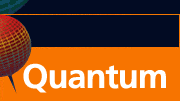CONTACTS
- Coordinator
Diego Dalvit
-
Quantum Lunch Location:
T-Division Conference Room, TA-3,
Building 123, Room 121
 |


Quantum Institute: Visitor Schedule
The Quantum Lunch is regularly held on Thursdays in the Theoretical Division Conference Room, TA-3, Building 123, Room 121.
For more information, contact Diego Dalvit.
October 19 , 2006
12:30 PM
Mark W. Keller,
Quantum Electrical Metrology Division, NIST/Boulder
Examination of the Charge Quantum in a Single-Electron Pump
Abstract
In contrast to ordinary metallic circuits where charge flow is
continuous, charge in single-electron tunneling (SET) circuits moves in
discrete quanta. This allows charge motion to be controlled with
impressive accuracy: a 7-junction SET pump can transfer charge at a rate
~ 10 MHz with an error ~ 10-8 per cycle. It is generally assumed that
each cycle transfers a charge of exactly e, the free electron charge. To
the extent that this is true, SET devices have an important role to play
in fundamental metrology by providing a solid-state current source that
is directly linked to a fundamental constant of nature. Such links are
especially important in light of a recent proposal that the
International System of Units (SI) be redefined in 2011 by assigning an
exact value to e (as well as to the Planck constant, h, and other
constants) as was done for the speed of light in 1983.
Is the SET charge quantum in fact exactly e? Theory provides surprisingly little guidance
here, but I will discuss why this is not a trivial question and then
present an experimental answer to the question: by placing a known
number of SET charge quanta onto a known capacitor, and by measuring the
resulting voltage across the capacitor using a Josephson voltage
standard, one can compare the SET charge quantum to e. We find that the
SET charge quantum is equal to e within a relative standard uncertainty
of 1 part in 106, which puts a limit on possible corrections that is ~
100 times smaller than the best previous result. This measurement is
expected to reach an uncertainty ~ 3 parts in 107 in the near future, at
which point it will also give useful information on possible corrections
to the Josephson constant, KJ = 2e/h.
|


